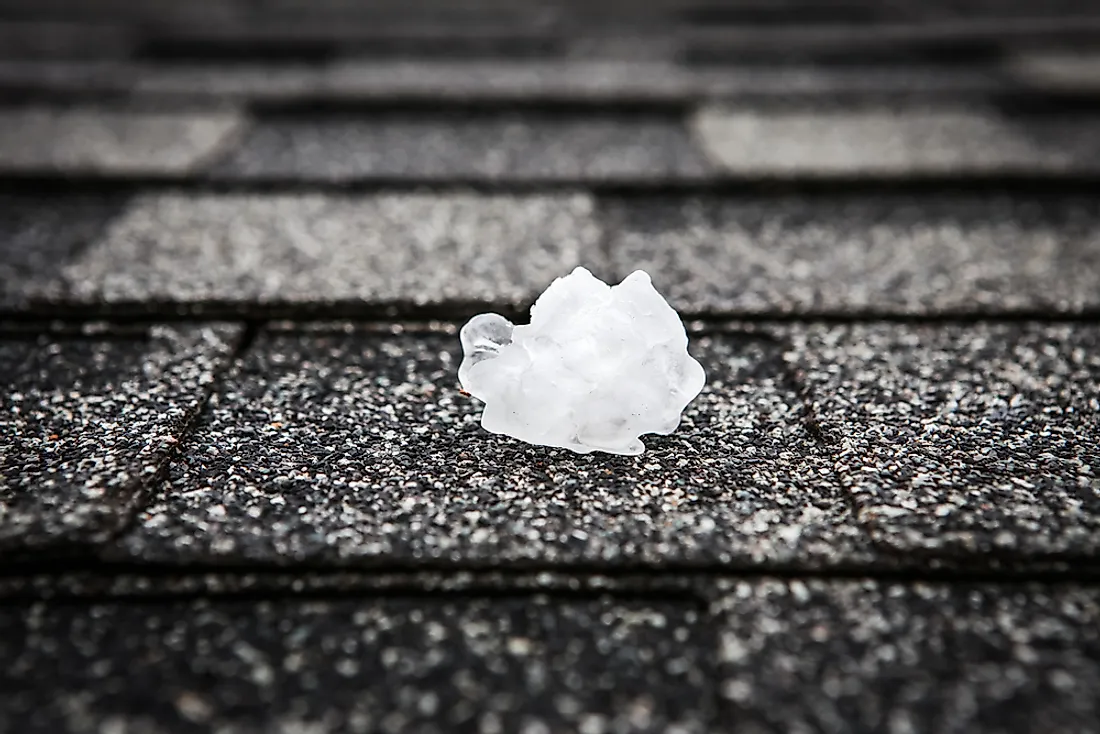How is Hail Formed?

Hail is a form of precipitation consisting of lumps with irregular shapes or balls of ice. Each ball of ice formed in this process is known as a hailstone. Hailstones resemble ice pellets; however, they vary in their formation. Hailstones range in sizes with bigger ones causing more hazards as compared with smaller ones. Average hailstones range from 5mm to 15mm.
The Formation of Hail
Initially, hail starts as water droplets that come from cumulonimbus clouds. The droplets are subjected to freezing temperatures as they rise, thus becoming super cooled. The storm’s high updraft speed blows the forming hailstones higher up the cloud. As the hailstones advance, they come into contact with the cloud having varying humidity concentration and super cooled droplets of water. The growth rate of hailstones in the process depends on the water droplets it encounters.
Hailstones acquire a translucent appearance when they come into contact with high water droplets. On the other hand, when it forms in areas mostly with humidity, they possess an opaque appearance. Besides, the speed of hailstone is determined by its mass as well as its position in the updraft cloud. Consequently, this also impacts on the thickness of the hailstone. The amount of water droplets which stick onto the hailstone depends on velocity. However, the rate of formation of hailstones varies due to the changing supercooled water and humidity conditions.
Apart from the formation under high humidity conditions, hailstones can also be formed through “dry growth” process. The hail formed through this process is opaque because of small air bubbles trapped as a result of fast freezing. However, the bubbles may escape later making the hail clearer. The varying growth conditions for a hailstone result in different cross-section areas in hailstone layer.
The hailstone keeps on rising until it acquires a mass which cannot be supported by updraft speed. The period differs depending on the updraft force and may last as long as 30 minutes. Thunderstorms known for hail-production may rise as high as 10km high. However, it falls towards the ground in the process while it continues growing. Later, it will start melting as it passes over air higher than freezing temperatures. Finally, the cloud starts dropping as hailstones.
There are several factors which favour formation of hail. Some of these conditions include: freezing level altitude below 3,400 meters, dry air moving into strong thunderstorms, and cloud elevation should be 6,100 meters and above. Regions which experience hail are mostly found in mid-latitudes in the continental interiors. However, hails stones are minimal within the tropics where they mostly occur at high altitude areas.
Is Hail Hazardous?
Regions that experience hailstorms regularly have witnessed severe damages. Notably, the transport industry is the most affected since airplanes do not fly in the process. Automobiles and trains, as well as sea travels, are also affected when there is hail. Furthermore, livestock, as well as crops, may be severely affected by hails.
Is It Possible to Prevent Hail?
Technological advancements in meteorology have enabled early detection and invention of measures to combat hail formation such as cloud seeding, where hail-forming clouds are dispersed using silver iodide shot into the sky by use of rockets and satellites.











